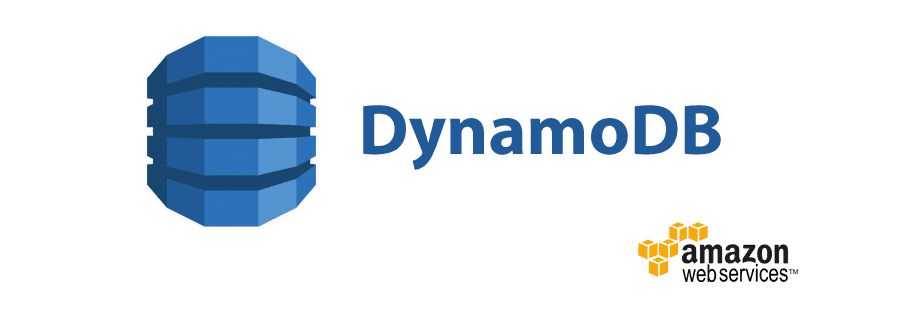Databases are a key component of most applications and websites. They store crucial data like content and user details and might capture events occurring within an application. There are many different database technologies available, and the one you choose can affect everything from application architecture to development processes.
We’re taking a close look here at DynamoDB and MongoDB, two popular offerings that are not traditional relational databases. You can decide if this “NoSQL” approach is right for your application and which of these two database platforms will do the job best.
Understanding the Technology: DynamoDB vs MongoDB
Over the previous decade, NoSQL databases have grown in popularity to address the demand for more flexible and scalable technology. The growth of social networking and user-generated content partly fueled this demand.
For years, most applications used traditional SQL databases, in which each row of data describes a distinct entity and its relationships to other entities. When responding to a query, a relational database joins the data from different rows and returns it to a client application. This architecture is optimized to reduce storage and eliminate duplication of repeating data, as each element of a result set is typically stored just once in the database.
In contrast, NoSQL databases commonly store the base entity and related data in a single document. That means some data is recorded multiple times, increasing storage requirements. But as storage costs have declined, the scalability of NoSQL solutions took precedence for many use cases. Their underlying architecture makes NoSQL databases exceptionally suited to run in clusters with data distributed across multiple nodes.
What Is DynamoDB?
DynamoDB is a serverless NoSQL database developed by Amazon to support its famous online shopping destination and then made available to developers in 2012 on its cloud hosting platform, Amazon Web Services (AWS). As it did for Amazon’s store, DynamoDB responds to queries without the computing overhead required to make the sometimes-complex joins of a relational database.
Optimized for scale, DynamoDB is a key-value item store where all data related to a specific key is stored with it. No joining is required! Having eliminated this requirement, engineers optimized DynamoDB to return data quickly.
Amazon makes DynamoDB available through AWS as a fully managed service. That’s why it has become popular with developers, who can use DynamoDB with minimal database overhead. Moreover, the service scales easily as applications amass users. And, if a company uses other AWS tools, DynamoDB can plug into them seamlessly.

How Does DynamoDB Work?
DynamoDB is a NoSQL key-value item store, and because it’s a managed service, its underlying architecture and infrastructure are abstracted from the developer.
Under the hood, data is partitioned using the primary key, with each partition containing three nodes that keep a copy of the data. This partitioning enables easy scaling, as data is spread across several servers. Additionally, the data replication provides redundancy if a particular node fails.
One of the three nodes is designated the leader node, where all writes are issued initially before being replicated to the other two nodes. Writing first to the leader node enables DynamoDB to maintain consistent writes. For optimal read consistency, all DynamoDB reads must also use the leader node.
This approach comes with a performance cost in read-heavy applications, so DynamoDB gives users the ability to opt for “eventual” consistency. This enables reads to be spread across all nodes. However, this option may sacrifice accuracy if the data hasn’t propagated to all nodes before a read operation.
Advantages and Disadvantages of DynamoDB
The main advantages of DynamoDB are that it’s serverless, scalable, and fast. You can configure it in minutes with minimal infrastructure overhead. AWS handles security, upgrades, server management, and ensuring high availability. Moreover, DynamoDB can scale infinitely (only limited by the physical size of AWS) on a pay-for-use model. Finally, DynamoDB offers rapid reads and writes, with scaling abilities that ensure continued fast performance as the data store grows.
A disadvantage is its minimal query options. Key lookups are helpful, but if you require more complex queries — such as aggregations — you’ll have to export data to an external database for analysis. Additionally, DynamoDB is available only through AWS. If you’re already integrated into the AWS ecosystem, that won’t be a problem. If your company wants to deploy on-premises, it must look elsewhere.
What Is MongoDB?
MongoDB is a NoSQL document store initially released in 2009 as an open-source database with the option of commercial support packages. It stores JSON documents as binary JSON (BSON) objects, which can store complex data structures like nested properties and arrays.
MongoDB runs on Windows, macOS, and Linux platforms and supports many programming languages. You’ll also find MongoDB available on popular cloud platforms from Amazon, Google, and Microsoft.
MongoDB is popular primarily because of its flexibility. It provides all the advantages of a NoSQL database while fulfilling more complex requirements, like ACID transactions for data integrity, aggregation queries, and the joining of datasets. And, due to its native JavaScript support, it’s an increasingly popular backend database for websites that use that popular programing language.

How Does MongoDB Work?
MongoDB stores BSON objects containing one or more key-value pairs. The values can be simple data types, like strings and timestamps, or complex types, like nested objects and arrays.
MongoDB stores documents in collections, similar to rows in a table. It’s a common practice for documents in a collection to share a similar schema, but even documents with the same keys may have different schemas — keys with the same name don’t need to store the same data type. MongoDB can enforce validation on properties when records are inserted or updated, and there’s a requirement for data in certain keys to be of a specific type.
MongoDB also offers sharding, which is similar to partitioning in DynamoDB. Sharding distributes data across multiple servers based on a shard key. Distributing data enables read and write operations to be spread across multiple servers, preventing a single server from overloading.
Advantages and Disadvantages of MongoDB
In addition to the typical benefits of NoSQL, MongoDB supports multiple platforms — vital for companies who want flexibility in their choice of cloud provider or the ability to host an on-premises database.
MongoDB also supports complex queries and aggregations through its aggregation pipeline. That makes it exceptionally flexible compared to other NoSQL choices, as it supports analytical queries, document searches, and data joining. However, performance can diminish at large scales. Additionally, MongoDB Atlas provides a serverless option for companies seeking to remove infrastructure management’s burden.
One of the disadvantages of MongoDB is that its data footprint can be quite large, as documents must store both the data and keys. And, although its aggregation pipelines are powerful tools, their use of a bespoke syntax makes them exceptionally complex to write and build.
Finally, there is an infrastructure overhead for those not using MongoDB Atlas, especially for production systems using replication and sharding to ensure the system is performant. That includes monitoring, managing data skew, and performing upgrades, on top of managing security.
Bottom Line: DynamoDB vs MongoDB
Although DynamoDB and MongoDB are both NoSQL databases, they differ substantially. Your use case will heavily determine which one to use.
First, DynamoDB has fewer available data type options at the schema level. For example, it does not support dates, meaning developers must maintain logic within their applications to parse and handle them. MongoDB supports many more data types, including dates.
Second, DynamoDB enables querying via key-value lookups and table scans. However, its table scan performance is lacking. For more complex or ad hoc-style queries, your best option is to export to a different database. In contrast, MongoDB supports key lookups on top of analytical queries and data joining. It offers more flexible index support since you can add secondary indexes to any field. While DynamoDB supports secondary indexes, they’re limited by their conceptual complexity and the number you can create.
On the security side, DynamoDB benefits from the AWS platform. Authentication with DynamoDB goes through AWS user access controls. That makes securing a DynamoDB database fairly straightforward.
With MongoDB, you are responsible for all security constraints, including creating user accounts and managing network access. That means much higher overhead. However, MongoDB Atlas turns MongoDB into a managed solution, eliminating these challenges.
As a managed solution, DynamoDB features built-in backup and recovery features, including the ability for multi-region replicas and simple recovery from backups. By default, MongoDB won’t manage these processes, requiring manual configuration. MongoDB Atlas eases the process somewhat but requires extra configuration to do so.
At a Glance: DynamoDB vs MongoDB
| Feature | DynamoDB | MongoDB |
| Data Types | Most standard data types excluding dates | Any data type in the BSON specification including dates |
| Querying | Key lookups with limited multi-document querying | Key lookups, queries, joins, and aggregations |
| Security | Built-in with AWS with little overhead | Self-managed unless using MongoDB Atlas |
| Scalability | Built-in with AWS with little overhead | Self-managed unless using MongoDB Atlas |
| Backup and Recovery | Built-in with AWS with little overhead | Self-managed unless using MongoDB Atlas |
Overall, MongoDB is the more flexible option — it can be deployed anywhere and provides a richer set of tools for storing and querying data. However, for a lean database with tight AWS integration and reduced infrastructure and security overheads, DynamoDB is a likely choice.
Summary
MongoDB and DynamoDB are highly performant NoSQL offerings whose relative strengths make them suited to vastly different uses. For a lean and simple solution, DynamoDB is a strong choice. But MongoDB is a winner if you require more complex schemas, aggregation queries, and better index support.
Remember that the price for flexibility is increased infrastructure overhead. But, if you need the flexibility of MongoDB and want to reduce the overhead, MongoDB Atlas often represents an affordable compromise.
Of course, in front of your database, you’ll want a compelling application. You can develop yours on Kinsta’s Application Hosting platform and even get started for free with our Hobby Tier, scaling up when users start flocking to your masterpiece.



Leave a Reply